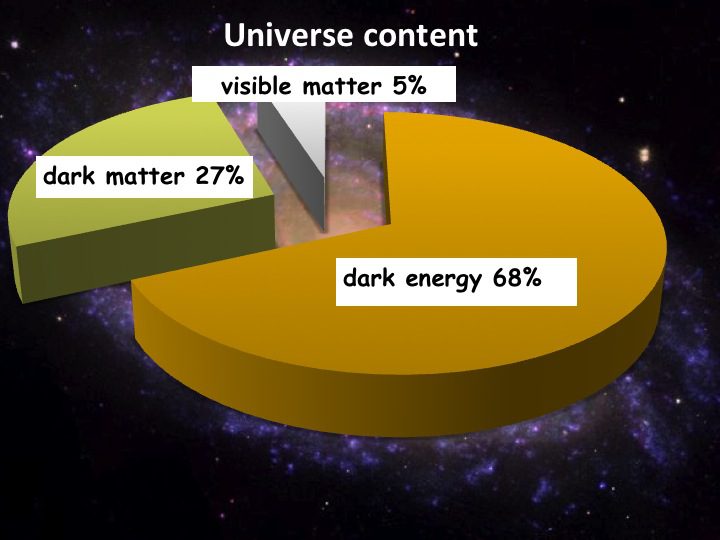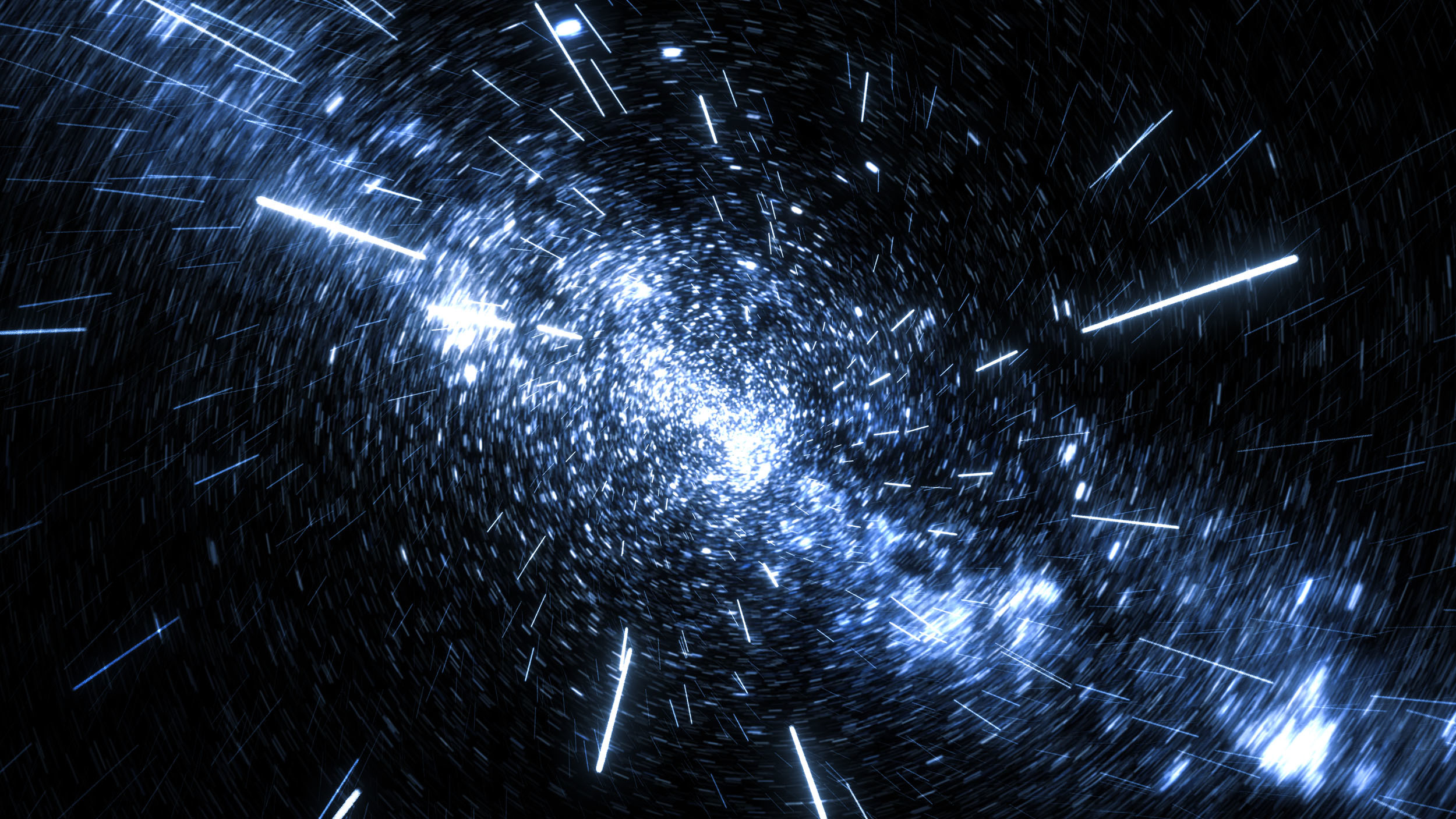A hundred ago, physicists worldwide held on to Isaac Newton’s depiction of the universe created more than 200 years ago. They believed space and time were immutable, and could be quantified using known measurements. Gradually, astronomers worldwide made more accurate observations and performed calculations to map the structure of the observable universe. They began to discover something very confounding: a mysterious force that has existed since the big bang. This, they called “Dark Energy”.
The term ‘Dark Energy’ is often confused with Dark matter due to the latter’s infelicitous name. Dark energy is not matter – it is simply energy. It permeates the universe, but doesn’t clump like ordinary matter. Dark energy remains constant over time, and unlike matter and radiation, it doesn’t dilute.
The cosmic pie depicts the dominance of this energy among the constituents of the universe. The percentage of energy in dark matter is about 26 percent, in ordinary matter about 5 percent, and in dark energy about 69 percent !! This is a surprisingly large statistic.

To understand dark energy, let’s trace back to when it all began.
The Discovery of Dark energy
Soon after the Big Bang when the universe was in the stages of early evolution, most of its energy was transmitted via radiation. As the universe began to cool, the radiation diluted faster than matter. Eventually, matter took over eventually as the largest contributor to the energy content in the universe. Much later in the evolution of the universe, dark energy—which hadn’t diluted while both radiation and matter had – came to dominate. It now constitutes about 70 percent of the Universe’s energy density.

The galaxy cluster Abell 1689 is well known for the way it bends light.
After Newton’s depiction of the universe, it was not until 1915 that a new theory came to light. In 1915, Albert Einstein laid out an alternative theory of gravity: general relativity. His framework consisted of a four dimensional fabric — formed by weaving together the three dimensions of space, and time. However, on closer inspection, the equation of general relativity presented an unstable cosmos. The imbalance occurred between matter and radiation, and rendered the universe as either expanding outward or shrinking inward. To stabilize this, an extra “cosmological constant” was thrown in the equations.
Related: Demystifying Dark Matter
In the 1930s, astronomers Vesto Slipher and Edwin Hubble measured the movement of distant galaxies using the Doppler effect – the same phenomenon that makes an ambulance siren vary the pitch as it approaches and move away. By measuring the red-shift in the frequencies of the observed galaxies, they deduced that the galaxies were moving further at a constant rate.
The Universe was indeed expanding. Einstein went on to call the cosmological constant as one of his stupidest mistakes.

The Universe from the Big Bang to the present
The Expanding Universe
Thanks to dark energy, the Universe is expanding at a much faster rate than ever observed before. This deduction has confirmed by researchers after studying type Ia supernovae. In 1998, two independent teams traced the history of the universe’s expansion by studying type Ia supernovae: stellar explosions whose colors tell when they went off and whose brightness reveals how far away they are now.

To their surprise, they found the supernovae to be dimmer than anticipated, indicating that the supernovae was farther away than they had expected according to calculated expansions rates of the universe. Both teams found that the expansion is speeding up, concluding that some unanticipated energy source was accelerating the rate of the Universe’s expansion. At first, it all seemed non-nonsensical. But further corroborations with measurements of the cosmic microwave background, gravitational lensing, and the large-scale structure of the cosmos suggested that dark energy is blowing up the universe like a balloon.
The Future
Dark matter and dark energy were never visible to us with conventional methods of cosmic observation. Yet their existence came to be posited through observing anomalies in gravitation of objects at cosmic scale of measurement . The Hubble space telescope has provided valuable data to study and deduce in this respect. But the next generation James Webb Space telescope, scheduled to launch in 2018 is expected to provide an even wider range of investigations in unraveling the mysteries around these two evasive contents of the universe which we seem to know so little about.

